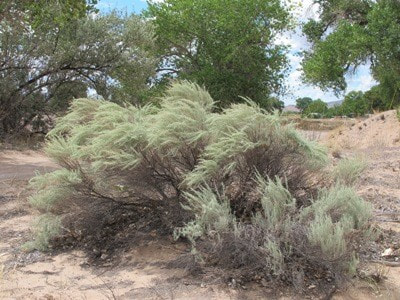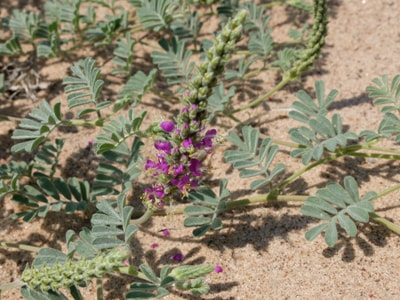|
Found in disturbed, sandy, gravelly areas, roadsides
Seen blooming in September near Hwy 554 Photo credit John George Broom Ragwort grows two to three feet high with an open, airy appearance and many woody, leafy stems. The leaves are narrow, the ones lower on the stems often wither away before flowering time. Numerous flowers, about one inch across with 5 or 8 petals, bloom in spreading, flat-topped clusters. Flowers are followed by feathery seeds, like those of the common dandelion. Traditionally the Zuni ceremonially rubbed an infusion of powdered root on limbs for 'aching bones’ and used drops of an infusion of blossoms for inflamed eyes. The Hopi used a poultice of flowers and leaves for sore muscles, pimples and skin diseases. The Navajo used the root bark for chewing gum. Source. If you trying to identify a different flower then you can check what other flowers bloom this month. If you cannot identify a flower from the website send a photo and where you took it to contact@rockymountainsflora.com. Read online for tips.
0 Comments
Found in sunny, disturbed areas, roadsides, fields
Seen blooming in September on the Lemitas Trail, Santa Fe National Forest When it is young and blooming the Russian Thistle is not so unattractive with its reddish stems, green leaves with a white spine and tiny flowers surrounded by pale to rose pink spiny bracts. It gets ugly when it matures. It can grow to 4 feet tall, usually 3 feet, in a rounded clump with many-branched stems and is the most common kind of tumbleweed. The plant dries out as the fruits develop, then breaks off at the base of the stem and is blown about by the wind, dropping seeds as it rolls, as many as 200,000 per plant, and piles up against fence lines. The shoots of young plants can be harvested and eaten. Young plants are also used for sheep and horse fodder. Navajos used an infusion of plant ashes for smallpox and influenza. A poultice of chewed plants was applied to ant, bee and wasp stings. Source. If you trying to identify a different flower then you can check what other flowers bloom this month. If you cannot identify a flower from the website send a photo and where you took it to contact@rockymountainsflora.com. Read online for tips. Found in dry and sandy areas
Seen blooming in September by Arroyo Trujillo, Abiquiu This common, faintly aromatic and attractive sagebrush grows to 4 feet tall and wide with arching, feathery, silvery-blue foliage. Leaves and stems are covered with silvery hairs. The leaves are thread-like and differentiate it from Big Sagebrush, also common in our area, which has three-toothed, wedge-shaped leaves. Like other sagebrush, the flowers bloom late in the season and are tiny, yellow and inconspicuous but produce a lot of pollen. It was used medicinally for boils, indigestion, and as a snakebite remedy. It was also used for ritual purposes. Being quite soft it was employed as a substitute for toilet paper. Source. If you trying to identify a different flower then you can check what other flowers bloom this month. If you cannot identify a flower from the website send a photo and where you took it to contact@rockymountainsflora.com. Read online for tips. Found in sandy soil
Seen blooming in September on the Lemitas Trail, Santa Fe National Forest Woolly Prairie Clover grows sprawling to two feet wide and six inches high with small, densely woolly, divided leaves. Small purple flowers with long white stamens and golden anthers grow in an erect spike about two inches high. The Navajo applied a poultice of the plant to centipede bites and Hopi children ate the sweet root as candy. Source. If you trying to identify a different flower then you can check what other flowers bloom this month. If you cannot identify a flower from the website send a photo and where you took it to contact@rockymountainsflora.com. Read online for tips. Found in sandy areas, roadsides
Seen blooming in August by the road to Abiquiu Lake Puncture Vine is a low, creeping plant with many hairy branches that spread quickly forming a mat over three feet across. Leaves are divided into pairs of leaflets with silky hairs. Tiny yellow flowers, ½ inch across, produce a fruit that is hard and spiny and breaks into burs which look like a goat’s head. These sharp, strong spines can injure bare feet and the mouths of grazing animals and easily penetrate thin shoes and bicycle tires. It is considered noxious in Colorado and other states. It should not be put on the compost pile because seeds remain viable for 10 years. It is used as medicine by cultures around the world, including modern use as a dietary supplement to enhance athletic ability and for conditions such as chest pain, eczema, enlarged prostate, sexual disorders and infertility. However, there is no good scientific evidence to support these uses. Source. If you trying to identify a different flower then you can check what other flowers bloom this month. If you cannot identify a flower from the website send a photo and where you took it to contact@rockymountainsflora.com. Read online for tips. |
AuthorI am Marilyn Phillips, a native of England, whose love of nature and the outdoors from childhood brought me by a circuitous route to Crested Butte, Colorado in 1993 and 16 years later to northern New Mexico. My exploration of the many trails in these areas, my interest in wildflowers and photography, and career in computer system design came together in this creation. If you have any corrections, comments or questions, please contact me by email. Archives
September 2024
Categoriescopyright © 2020
|







 RSS Feed
RSS Feed